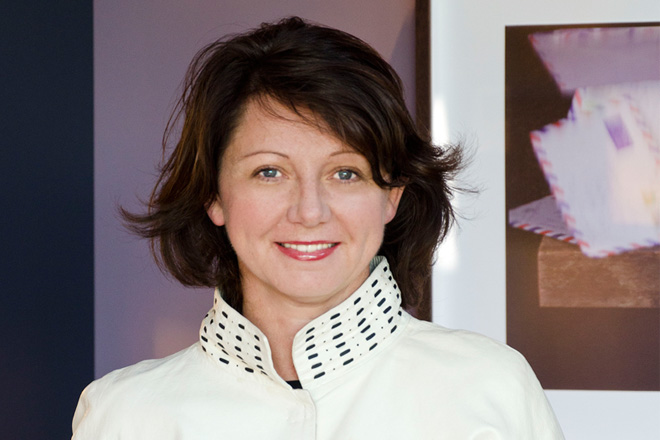Australia-based designer, Rowena Cornwell, is a specialist in lifestyle commercial projects, having built a reputation as one of the country’s leading interior architects over the past 15 years. Her studio, Coop Creative, has worked on a wide range of projects in Australia and Asia Pacific, one of the most notable being the award-winning, five-star boutique Spicers Balfour Hotel in Brisbane. Hospitality Interiors’ Katie Sherry speaks with Rowena about why an understanding of human emotion is critical for good design, what makes the Australian hospitality scene tick, and her plans to pioneer an innovative new branding concept.
What drew you to working in interior design?
I was a late starter to architecture and interiors as I didn’t start studying in this area until I was 29. The switch was two-fold. Firstly, I was looking for design that was a little more solid than reinventing a direction every three-six months as it is with fashion [Rowena worked as fashion co-ordinator in her 20s]. Secondly, I had engaged an interior designer to work with me on my first house and he said to me “you could do this, you have the eye”.
This brought me back to an earlier rumination – when I was in my final year of school, I was offered a position to study at my local university. But, after investigating the prerequisites, I didn’t have the correct science subjects to qualify. However, I suppose life is cyclic and I was eventually led back there as a mature student, and even today still do some guest lecturing work in the faculty.
How would you describe your design ethos?
My work is often read in the first instance as decorative, but given my architecture training I employ all the architectural devices to engage the interior. This applies to form and order, circulation, foreground and background, light and shade and scale – all critical elements, especially in relation to the human body.
I often describe it as creating and manipulating internal topographies to accommodate human desires and emotions. Pattern, colour, movement and the story are then overlaid to bring joy.
“It is hard to design a good hotel without some understanding and curiosity about people”
How does designing commercial spaces differ from residential?
I always say that working in the residential sector allows you to cut your teeth as a designer. Working with people to get details correct in their own homes prepares you for negotiations around budgets, expectations and responding to a client’s individual needs.
The commercial sector I work in is lifestyle-related spaces, of which hospitality plays a big part. Residential design teaches you a lot about the psyche of humans, and it is hard to design a good hotel without some understanding and curiosity about people. Also, with the trend to try to make commercial spaces more residential or homely, the transition is easy, and truthfully I don’t have a preference.
What makes a hospitality space stand out?
I am a huge fan of spaces that evoke a real sense of place. Kit Kemp of Firmdale Hotels seems to get this right. Even in a New York hotel you can still feel a little bit of Britain. This is what I think design needs.
I was recently in Kuala Lumpur, Malaysia presenting a seminar and attending the International Hotel and Property Awards, and noticed – with the extent of development in the Asia Pacific – a huge opportunity to embrace this philosophy to give Asia a real point of difference.
“I am a huge fan of spaces that evoke a real sense of place”
How does the Australian hospitality scene differ to the UK?
The main physical difference is that Australians live on the edge of their buildings because of our climate – we spend a lot more time outdoors. In Britain the hospitality experience is often a lot more internal.
Natural light plays a big part here, but our aesthetic is regional. Melbourne’s heart is chic laneway experiences that you often need to find, Sydney is focused on bigger spaces and Brisbane is a mix of shabby vintage by young entrepreneurs and light-filled modern dining rooms with verandahs.
How has hospitality design evolved in recent years?
An increasing number of clients are demanding an experience. Good food and a top-notch location is not enough to satisfy the new middle-class luxury customer.
Authenticity is paramount to creating a memorable experience that encourages return visits. Bigger is no longer better, intimacy and uniqueness has been the biggest change I have noticed.
How important are award wins in building a reputation in the design world?
I do firmly believe that you are only as good as your last project so you have to stay grounded, and not let the awards instil false confidence. However, peer and industry recognition keeps the work you are doing in the studio relevant and contemporary. It is important to have a bigger vision of what you are creating, and competitions bridge the follies of design with the pragmatism of industry.
“More and more, I see the role that the designer plays at the start of a project as being integral to it success”
What are your plans for the near future?
More and more, I see the role that the designer plays at the start of a project as being integral to its success. At my studio, Coop Creative, we are moving into the speciality area of three-dimensional spatial branding. It is hard to create an authentic branding experience without giving consideration to the space the brand will live in. We are aligning ourselves with agencies to be involved in grass-roots concept ideas for hospitality projects. This is a new market and I feel excited to be pioneering in this area.



